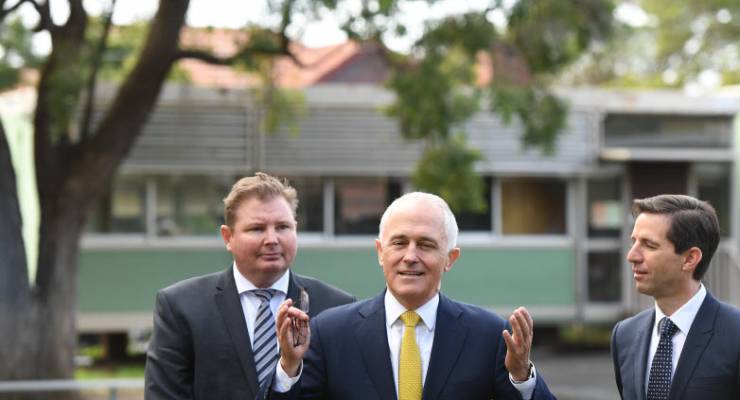
One of the few pleasures of watching politics in recent years has been observing the contortions, gyrations, backflips and general one-person game of Twister that the federal Liberal Party has engaged in on school funding. Once a potent weapon to use against Labor, when John Howard used the threat of a “private school hit list” to demonise Mark Latham’s Labor, school funding became a major weakness for the conservatives after the (first) Gonski review of school funding under Julia Gillard. Having started the “school funding wars” in the 2000s, the Liberals discovered they were losing them as the years went by. Now Malcolm Turnbull has declared that the war is over and he is going the full Gonski — at least according to his own numbers.
So we toted up all the positions the Liberals have had on Gonski over the last five years.
February 2012: Then-education spokesman Christopher Pyne rejects the 260-page Gonski report two hours after its release and subsequently warns of Labor plans for a “private school hit-list”.
July 2012: Pyne warns the Coalition will repeal Gonski legislation if elected.
April 2013: Gillard government announces a funding package based on the report, but short of the funding levels identified in it. No school is to be disadvantaged in the new funding model. Pyne calls it a “conski”.
July 2013: After Gillard and her successor Kevin Rudd negotiate a number of funding deals, Tony Abbott says the Coalition will only retain the first year of Labor’s Gonski funding.
August 2013: Tony Abbott commits to a “unity ticket” with Labor on Gonski funding for four years, saying “we will honour the agreements that Labor has entered into. We will match the offers that Labor has made. We will make sure that no school is worse off.”
November 2013: Now education minister, Pyne announces in fact only the first year of Gonski funding will be honoured, and funding for 2015 and onwards will require a new model; he says the socio-economic status model of the Howard government, which heavily favoured private schools, would be a “good starting point” rather than the Gonski model.
December 2013: Abbott announces that four years of Gonski funding will be honoured, but that the money will be handed to the states without any requirement for matching funds or any other of what Pyne calls Labor’s “command and control” measures.
May 2014: First Coalition budget cuts education funding indexation level down to what it terms a “sensible indexation arrangements for schools”.
2013-2016, various: Liberals respond to Labor attacks on school funding by saying “more funding is not the answer” to improving Australia’s educational performance.
January 2016: The government criticises Labor’s commitment to additional schools funding as “huge, unfunded spending commitments”.
March 2016: Malcolm Turnbull proposes a state income tax, under which the Commonwealth would abandon all funding for government schools and only fund private schools.
May 2016: Government lifts school funding indexation again to reflect what it says are “real education costs”, requiring an extra $1.2 billion in funding over forward estimates. “Command and control” funding requirements are now re-imposed on the states.
May 2017: Government commits a further $2.2 billion over forward estimates and continuation of additional funding through to 2027, all unfunded. Education Minister Simon Birmingham reveals there will be “a small number of schools that will experience some negative growth”; around 350 private schools will have real funding reductions. David Gonski to undertake “Gonski 2.0” review to determine allocation of new funding. Press gallery lauds Turnbull’s master stroke.
So, apart from whether the review undertaken by Gonski was worthwhile, the level of funding for schools, the formula for funding for schools, the indexation for funding for schools, the sources of funding for schools, whether “command and control” conditions apply to funding of schools, whether wealthy private schools should lose funding and whether more funding will improve our schools’ performance, the Liberal Party’s school funding policy has been a model of clarity and consistency.








“You put your funding in
Make with your most devout.
The election’s over :
Pull your stuffin’ fundin’ out.
You do the Gonski pokey
Spun your vows inside to out –
That’s what it’s all about?”